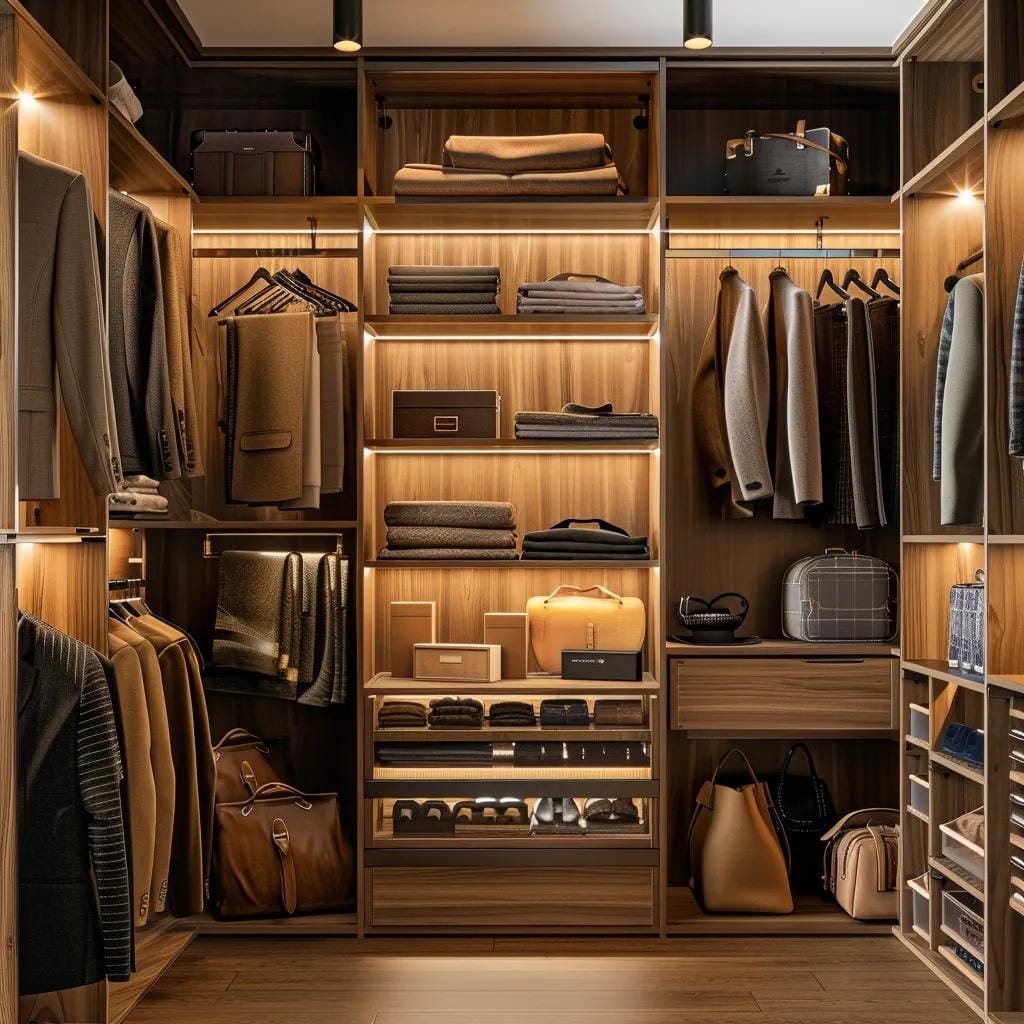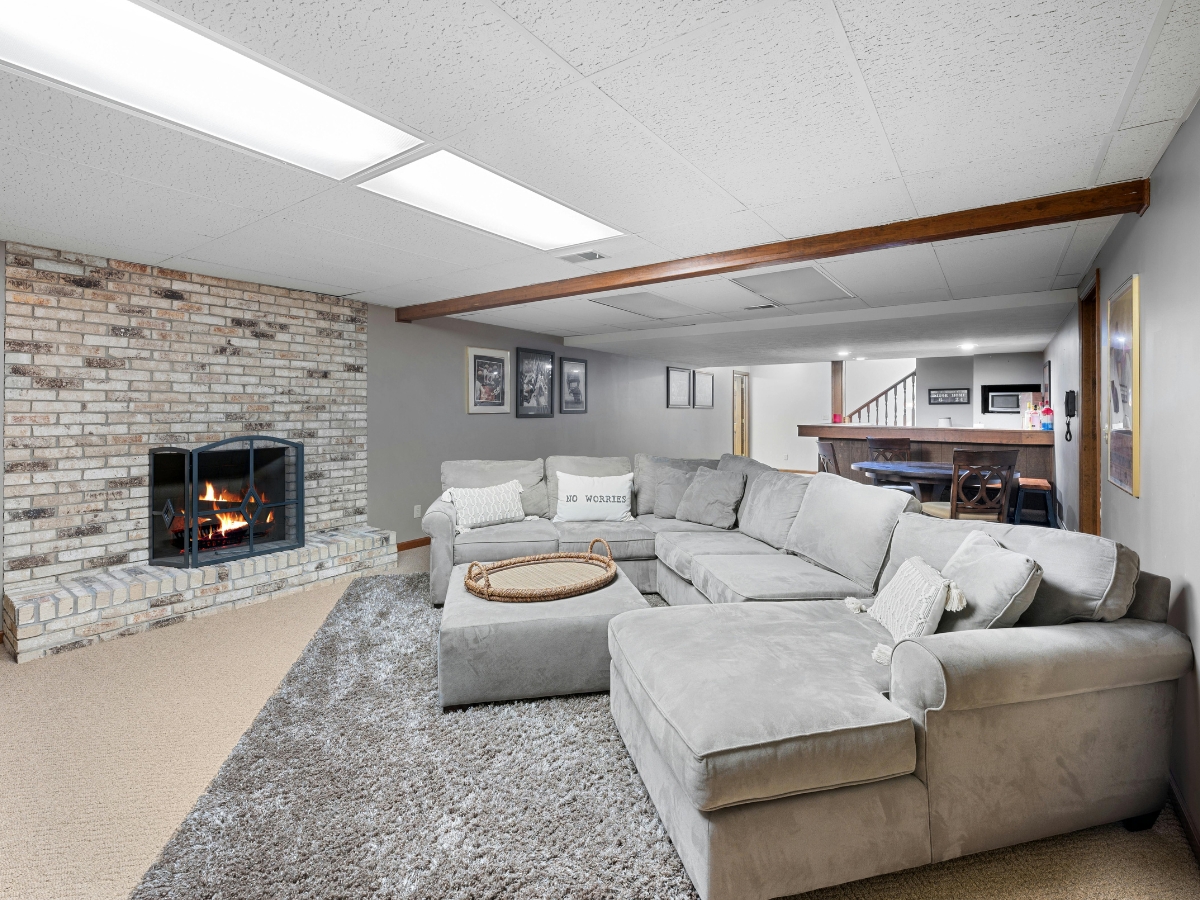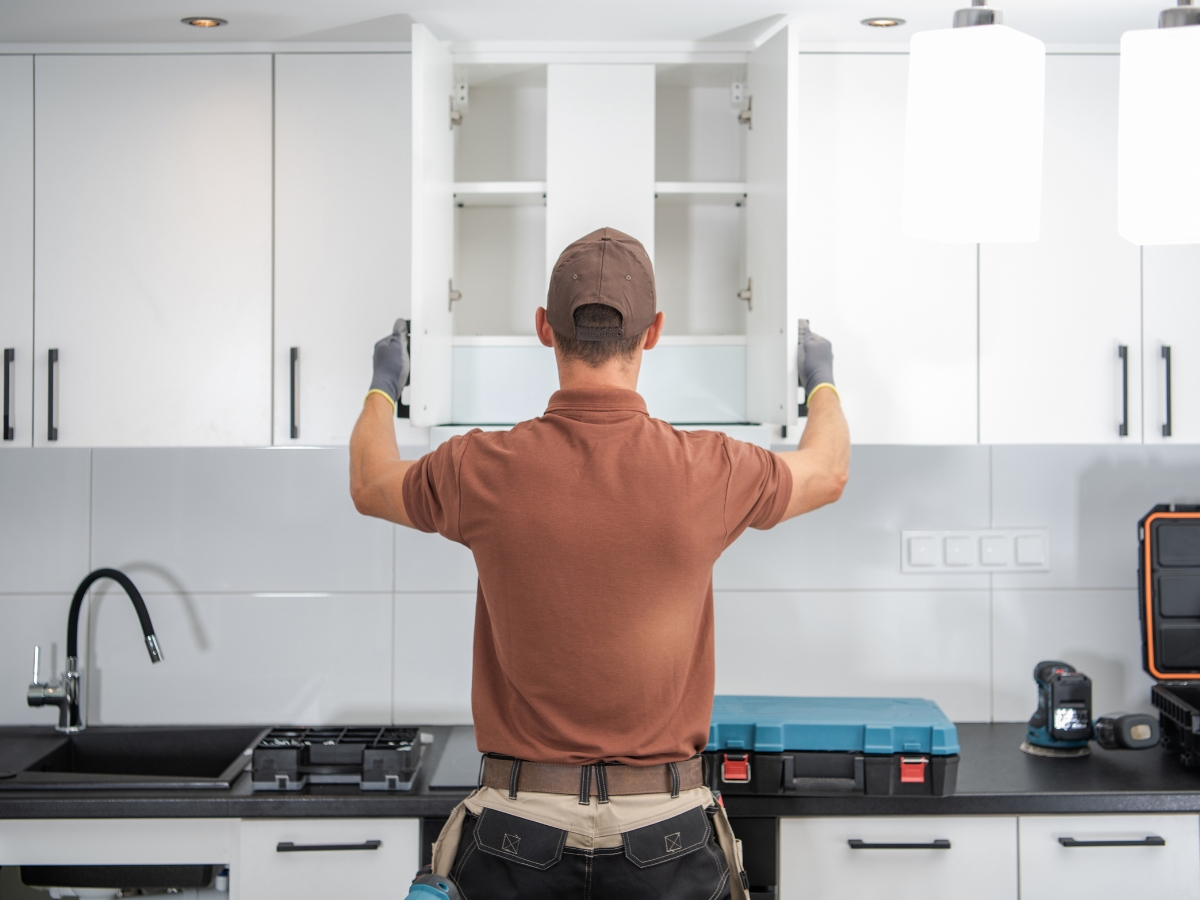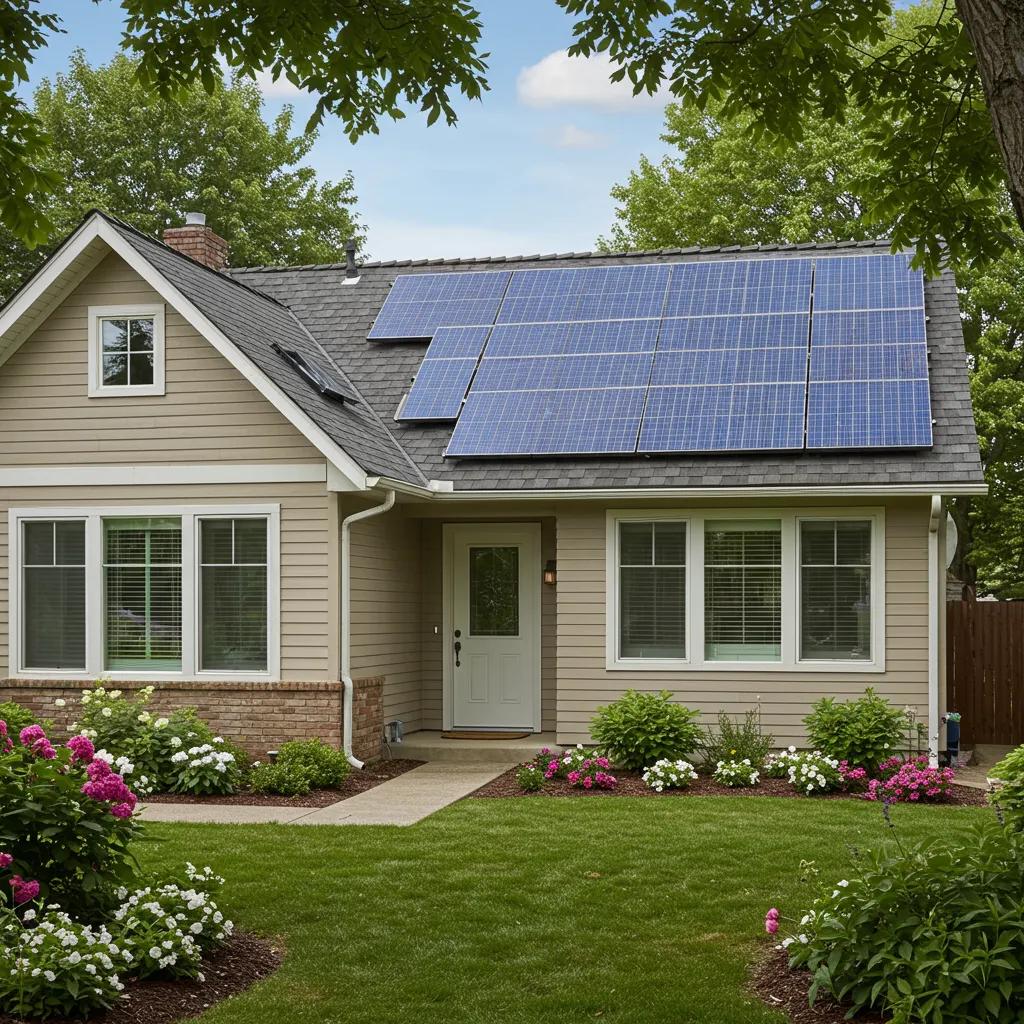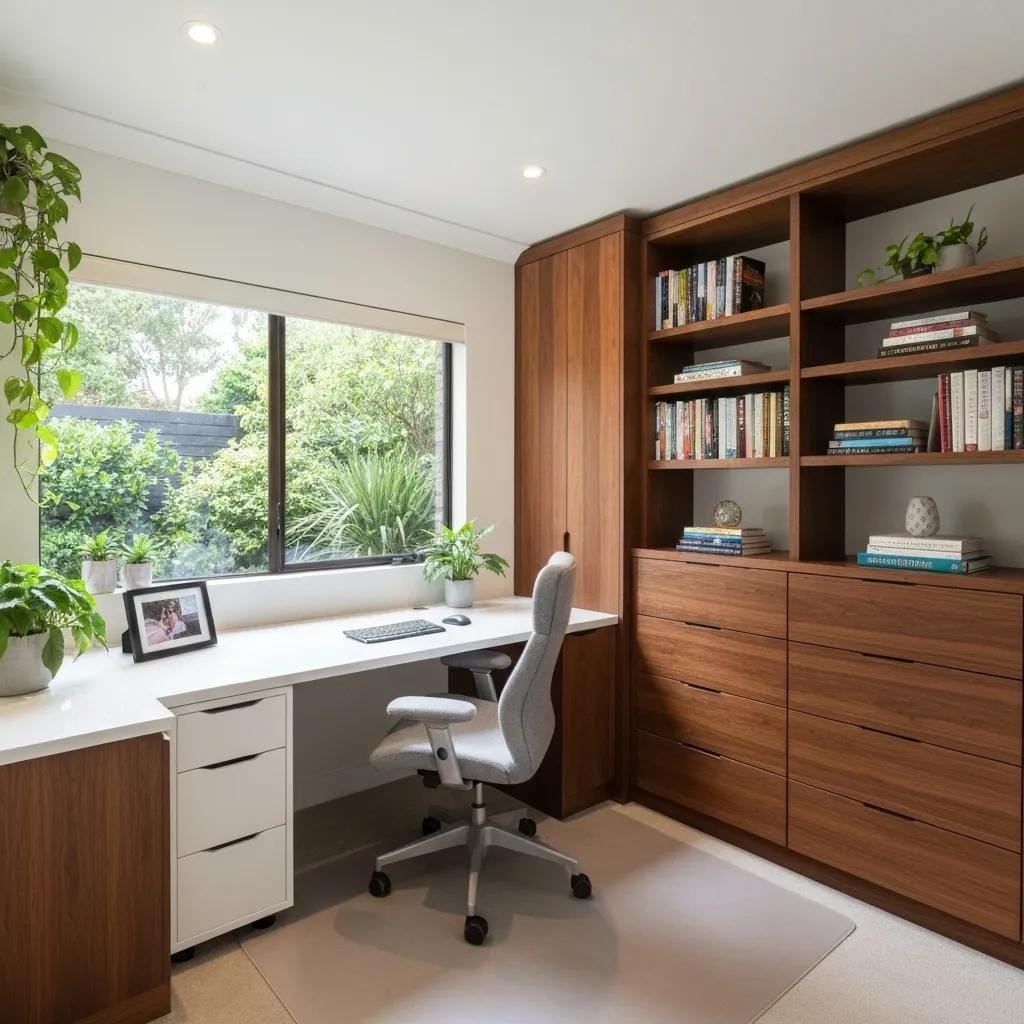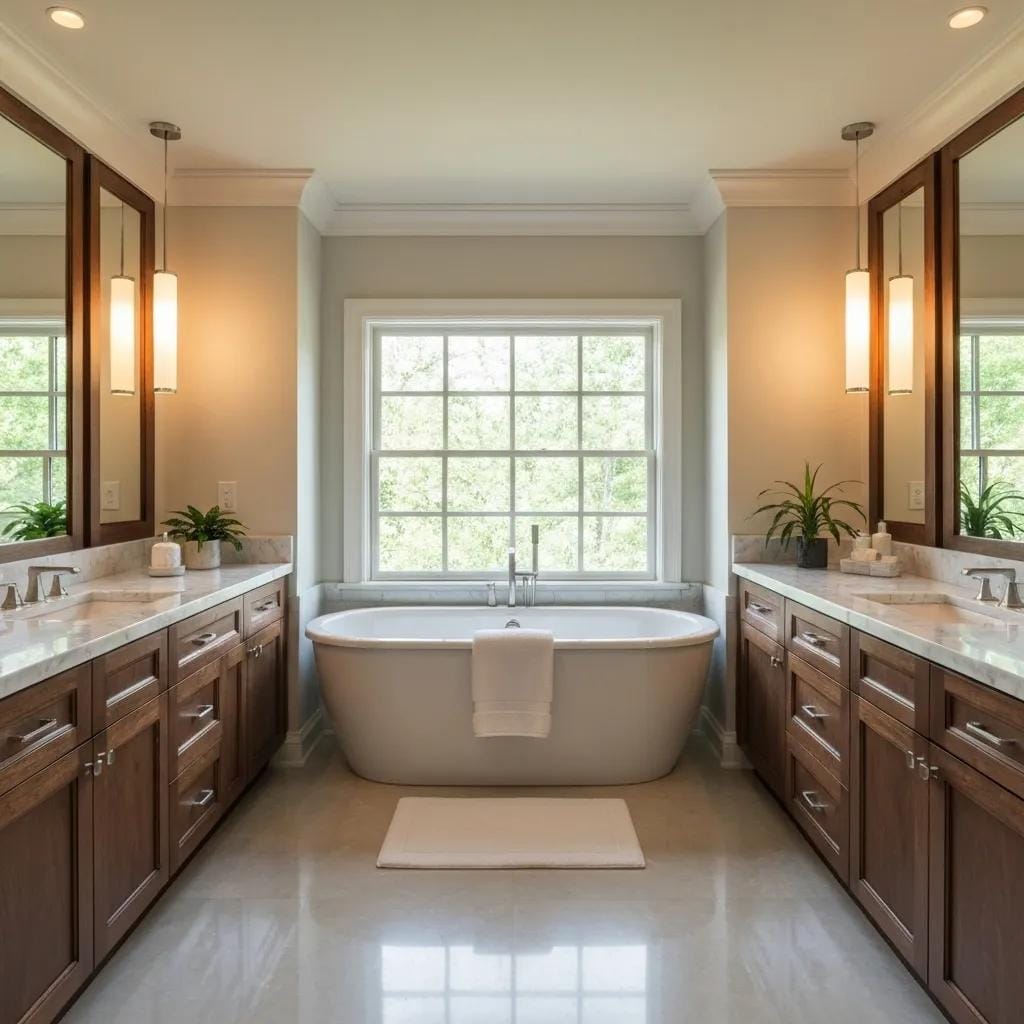A clutter-free home isn’t just about aesthetics—it’s about creating a space that supports your daily routine, mental clarity, and peace of mind. In Alpharetta, custom closet designers are transforming disorganized spaces into highly functional, beautifully tailored storage areas that make life easier. From walk-in wardrobes to sleek built-ins, these experts understand how to maximize every inch of your home with smart layouts and personalized features. Whether you’re battling overflowing shelves or looking to streamline your entire home, the right storage solution can bring lasting order—and a touch of luxury—to your everyday living.
Maximize Every Inch with These Tips From Custom Closet Designers
Why Choose Custom Closets for Your Alpharetta Home?

Custom closets transform underused nooks and sprawling walk-in spaces into efficient storage tailored to your daily routine. Built to your precise measurements, these systems take advantage of every inch—from awkward corners to high ceilings—so you never lose track of a favorite outfit or accessory. Beyond storage, they add a refined design element that elevates the look of your bedroom or dressing area. Homeowners in Alpharetta find that personalized closets not only streamline morning routines but also strengthen their home’s appeal when it’s time to sell.
Maximizing Space and Increasing Home Value
A key advantage of custom closet design is its ability to recover wasted cubic footage. Adjustable shelving reaches over doorways, hanging rods slide to suit garment lengths, and pull-out storage keeps ties, belts, and jewelry visible and accessible. By replacing generic wire racks or outgrown wardrobes, you unlock hidden capacity without adding furniture that clutters the floor. This efficient use of space carries real financial benefits. Real estate agents note that professionally crafted storage can boost resale value by making properties feel move-in ready and well-maintained.
Streamlining Organization to Reduce Daily Stress
Personalized closet layouts establish clear zones for every category of clothing and accessory. Integrated drawers keep undergarments and socks neatly contained, while divided shoe shelves display pairs in plain sight. A designated space for hats or handbags means no more hunting through piles, and specialized pull-out racks protect delicate scarves or ties from wrinkles. With assigned homes for each item, the chaos of mismatched hangers and scattered shoes gives way to a calm, orderly environment. Homeowners report spending less time searching and more time enjoying their wardrobe choices.
Strong Return on Investment for Home Renovations
Among interior improvements, custom closets rank high for their return on investment. Unlike large-scale additions or major kitchen overhauls, closet upgrades require minimal structural work yet deliver measurable increases in both functionality and perceived value. A modest investment in quality materials—hardwood finishes, metal hardware and LED lighting—yields benefits that last for years. Well-designed closets resist wear and retain their appeal, reducing the need for future updates. The result is a durable home feature that pays dividends in daily convenience and long-term equity.
Design That Grows with Your Needs
As your lifestyle evolves, custom closets adapt. Removable shelves and modular components can be reconfigured to accommodate new hobbies, seasonal wardrobes or a growing family. If your storage priorities shift—perhaps you swap shoe racks for linen shelves or add extra hanging space for formalwear—these systems adjust without replacing the entire unit. This flexibility sets custom closets apart from off-the-shelf options, ensuring that your investment continues to serve you well as your needs change.
What Is the Custom Closet Design and Installation Process in Alpharetta?

In Alpharetta, custom closet projects follow a four-phase workflow that keeps homeowners involved at every step and ensures a polished final result. The journey begins with an in-home consultation and ends with a hands-on installation by skilled craftsmen. Along the way, precise measurements, realistic 3D visuals and thoughtful material choices turn a simple storage upgrade into a seamless design experience.
Initial Consultation and Design Meeting
The process kicks off with a visit from a design specialist who measures the space and discusses your storage needs. During this meeting, you’ll go over wardrobe habits, shoe collections, seasonal storage and any problem areas—like narrow alcoves or awkward corners. The designer also reviews your style preferences and budget guidelines. Gathering these details up front lays the groundwork for a layout that matches your daily routine and aesthetic vision.
3D Rendering Brings Ideas to Life
Once the designer has the room’s dimensions and your priorities in hand, they create a photorealistic 3D model of the proposed closet. This rendering shows wood grain finishes, shelf placements and lighting schemes in true-to-life color and perspective. You can virtually “walk through” the closet, swap out cabinet stains, adjust hanging-rod heights or experiment with drawer sizes. Early visualization helps avoid costly changes down the line by confirming that each element fits your wardrobe and workflow.
Material and Accessory Selection
With the layout approved, attention turns to materials and hardware. Melamine-coated panels provide a scratch-resistant, low-maintenance surface for shelves and dividers. Solid wood shelves add a touch of warmth and can be stained to highlight natural grain patterns. PVC-coated wire racks work well for ventilated storage of linens or athletic gear. Heavy-duty hanging rods support up to 150 pounds per linear foot, ensuring that even dense suits or winter coats hang straight. Integrated LED strip lighting illuminates each compartment and offers adjustable color temperatures for day or evening use. Velvet-lined jewelry trays keep rings and bracelets organized and protected from scratches. By combining these options, your closet delivers both the durability you need and the refined look you want.
Seamless Installation for a Ready-to-Use Closet
When materials arrive, most components come preassembled to speed up installation and minimize disruption in your home. Installers follow a detailed timeline that includes daily progress updates and careful site protection. They mount cabinets, secure shelving, position hardware, and wire up lighting fixtures, all while keeping the work area clean. A final walkthrough confirms that drawers glide smoothly, doors align perfectly, and every accessory functions as intended. The result is a fully operational closet system you can start using immediately.
Design That Adapts to Your Life
Beyond the initial installation, custom closets in Alpharetta are built to evolve with your needs. Adjustable shelving, removable drawers, and modular accessories let you reconfigure the space as wardrobes change or storage demands shift. Whether you add seasonal shoe racks, swap a row of drawers for extra hanging space or integrate a new accessory organizer, the system flexes without the need for a complete overhaul. This long-term adaptability ensures that your custom closet remains a functional and beautiful asset in your home.
What Types of Custom Closets Do Alpharetta Designers Offer?

Alpharetta designers create three primary styles of custom closets—walk-in systems, reach-in solutions and modular wardrobe units—each tailored to fit a home’s layout and the homeowner’s storage demands. Walk-in closets work best in larger rooms or converted bedrooms, providing expansive storage and design flexibility. Reach-in systems make efficient use of smaller alcoves or narrow hallways, while modular units offer a plug-and-play approach for renters or those seeking an adaptable setup. By matching closet type to space, designers ensure every configuration maximizes practicality and aesthetic appeal.
Walk-In Closets That Combine Luxury and Function
A walk-in closet brings a boutique feel to a home by integrating full-height cabinets with central islands and cozy seating areas. Cabinets can include pull-out drawers for folded items, open shelves to display handbags or hats, and concealed racks for dresses and suits. Islands serve as staging areas for outfit planning or offer additional drawer storage, while built-in benches store extra linens beneath their seats. Proper lighting—whether LED strips under shelves or recessed ceiling fixtures—illuminates every corner. Together, these elements create a spacious, organized environment where clothes and accessories are easy to find and admire.
Reach-In Solutions Designed for Smaller Areas
When floor space is limited, reach-in closets provide an effective alternative. Designers often install sliding doors or bi-fold panels to keep the area uncluttered. Inside, adjustable hanging rods accommodate both long garments and double rows of shirts and pants. Wire baskets mounted at waist height hold sweaters or workout gear, while corner shelving units fill awkward nooks with neatly folded linens or shoe displays. By combining flexible rods, movable shelves and slim storage baskets, reach-in systems deliver a surprising amount of capacity without overwhelming a compact space.
Modular Wardrobe Systems for Tailored Organization
Modular units break storage into distinct zones, allowing homeowners to customize layouts over time. Pull-out trays hold ties, belts and scarves without creasing, and tiered shoe cubes angle each pair forward for quick selection. Drawer inserts lined with soft fabric protect watches, jewelry and other delicate items. Tall cabinet modules stand ready for coats or dresses, and shorter modules topped with a countertop create a dressing area or valet station. Since each component installs independently, these systems can evolve—simply add a drawer module here or swap in a taller cabinet there—so the closet adapts as wardrobes change.
Smart Storage Solutions and Accessories for a Clutter-Free Home

Smart closet accessories enhance functionality by combining thoughtful engineering with clean design. From motion-activated LED lighting to modular hardware, these add-ons turn ordinary storage spaces into efficient, user-friendly systems. When integrated into custom closets, they not only protect garments but also streamline daily routines by placing tools exactly where they’re needed most.
Shelving and Drawer Innovations
Adjustable shelving systems adapt to changing storage needs. Melamine-coated boards resist scratches and moisture, while pegs allow you to shift shelf heights for folded sweaters, handbags, or shoe boxes. Soft-close drawers add a layer of quiet convenience, using gentle dampers that prevent slamming and protect both contents and cabinet frames. Open wire shelving promotes air circulation, keeping items fresh and reducing musty odors in humid environments. For those who prefer a sleeker look, glass-front cabinets offer clear visibility of stored items, making it easy to spot that exact pair of shoes or neatly folded scarf at a glance.
Enhanced Lighting and Jewelry Storage
Proper illumination transforms dark closets into boutique-style galleries. Integrated LED strips—installed along cabinet edges or beneath upper shelves—cast even light across every compartment. Motion sensors can trigger lights as you approach, conserving energy when the closet is not in use. For small accessories, velvet-lined jewelry trays and pull-out organizers protect delicate pieces from scratches while keeping earrings, rings, and necklaces neatly separated. These trays slide out smoothly, providing a dedicated workspace and preventing tangled chains or misplaced items.
Specialized Inserts for Shoes, Hampers and More
Closet systems can include custom modules designed for specific items. Tiered shoe rack modules hold everything from stilettos to cowboy boots, angling each pair outward for easy access and display. Pull-out hamper drawers keep laundry out of sight and off the floor, with ventilation slats that reduce odors. Wall-mounted accessory hooks provide quick grab spots for hats, scarves, belts, and ties, ensuring these frequently used items stay organized and wrinkle-free. Drawers with built-in dividers can hold folded linens or athletes’ kits, making every item easy to find on busy mornings.
Modular Hardware for Future Flexibility
One of the biggest advantages of smart closet systems is their adaptability. Modular frames and interchangeable components let you reconfigure layouts as your wardrobe evolves. You can swap a shelf for a drawer, replace a drawer insert with a cube, or add a new accessory rack without starting from scratch. Hardware like telescoping rods and fold-away valet arms creates temporary hanging space for outfits in progress. Because each piece locks into a common rail system, expansion or downsizing happens in minutes rather than hours.
Whole-Home Organization Extends Custom Closet Benefits

Taking the organizational principles from your custom closet and applying them throughout the house creates a cohesive look and streamlines daily routines. Coordinated finishes on shelving, drawers and hardware tie bedroom storage to other areas, reinforcing a unified design language. Whether you plan a dedicated pantry, a reworked garage, a home office or a welcoming mudroom, matching materials and organizational strategies ensure every space feels intentional and clutter-free.
Pantry Systems That Improve Accessibility
An organized pantry saves time and reduces waste by keeping ingredients within easy reach. Pull-out shelving lets you slide trays of canned goods or dry mixes forward without stooping or digging. Adjustable spice racks use vertical space efficiently, so bottles sit in tiered rows that make labels visible at a glance. Clear food-grade bins corral bulk items like rice and pasta while maintaining airtight freshness. By grouping similar products together, you’ll spend less time hunting for staples and more time preparing meals.
Garage Storage That Works for You
Transforming a garage from a catchall into a structured storage zone protects tools, equipment, and seasonal items. Overhead racks lift bulky bins out of the way, freeing floor space for vehicles or workbenches. Wall-mounted cabinets with secure doors shield hazardous materials and power tools from dust and curious hands. Slatwall panels hold bikes, garden rakes, and ladders on hooks that you can reposition as needs change. A clear, well-planned layout keeps everything in its place and simplifies weekend projects.
Home Office Cabinets That Streamline Work
A custom home office cabinet system supports productivity by blending open and closed storage. File-ready drawers sized for letter and legal paperwork keep documents organized and accessible. Floating shelves create display areas for books, awards, or reference materials without crowding the desktop. Concealed power outlets inside cabinet niches provide charging for laptops, phones, and tablets while hiding unsightly cords. With everything stowed neatly behind matching doors or in labeled drawers, you’ll maintain focus on tasks rather than on piles of paper.
Mudroom Solutions for Tidy Entryways
A well-designed mudroom greets family and guests with order rather than chaos. Built-in benches double as shoe storage by incorporating cubbies beneath the seat, so footwear stays out of the entry path. Wall hooks and vertical lockers offer easy spots for coats, backpacks, and hats, preventing jackets from ending up on chairs. Slim, upright shelving towers next to the entry hold mail, keys, and reusable bags in designated slots. With each item assigned its own home, morning departures and evening returns become smoother and more efficient.
Streamlining Alpharetta Closet Transformations: Design to Installation

Custom closet pricing depends on design complexity, material quality, and total linear footage. Simple reach-in systems start around $2,500, while fully built-out walk-in configurations can exceed $15,000. Key drivers include cabinet finishes, hardware upgrades, and integrated features such as lighting or specialized storage modules. By identifying must-have elements early, homeowners can align their vision with a realistic budget.
Materials and Design Choices Impact Pricing
Your choice of materials sets the base cost per linear foot. Melamine-coated panels, known for their scratch resistance and low upkeep, typically range from $50 to $70 per linear foot. Plywood shelving, which offers greater strength and a more refined look, usually costs between $75 and $90 per linear foot. Solid wood options—such as maple or cherry—command premium pricing of $100 to $150 per linear foot, reflecting their natural grain, longevity, and ability to take custom stains. Adding features like soft-close drawers, concealed LED lighting, or decorative molding can increase the overall price by 15 to 25 percent, but it often pays off in durability and curb appeal.
Average Timeline and Cost Range
A standard custom closet project in Alpharetta unfolds over five to six weeks. It begins with a design consultation and detailed space measurement, followed by a one- to two-week 3D rendering phase where layouts and finishes are finalized. Once approved, manufacturing and assembly of components take another two to three weeks.
Professional installation then wraps up in one to two days, with labor fees generally falling between $200 and $500, depending on site conditions and project scope. For a basic reach-in closet, total investment, including materials and labor, often lands between $2,500 and $5,000. Mid-range walk-in systems typically range from $6,000 to $10,000, while luxury designs with premium woods and custom islands can climb beyond $15,000.
Financing Options and Consultation Offers
Many local providers offer 0 percent APR financing for up to 12 months, allowing homeowners to spread payments without added interest. Complimentary in-home design consultations help establish project parameters and material selections before any financial commitment. By taking advantage of these offers, Alpharetta residents can tailor payment plans to their budgets while ensuring a well-planned closet system that fits both space and lifestyle.
What Are the Best Tips for Maintaining a Clutter-Free Home with Custom Closets?

Maintaining a clutter-free home begins with regular upkeep and strategic habits that reinforce the benefits of your custom closet investment.
Monthly Decluttering Routines
Set aside time each month to sort through your wardrobe. Remove items you haven’t worn in the last season and move them out of your closet—either to donation or to long-term storage. By clearing obsolete accessories and off-season clothing, you make space for the pieces you actually reach for. Over time, this habit prevents overcrowding and ensures that every shelf and rod holds items you use regularly.
Daily Return Habits
Make it a rule to put garments and accessories back in their assigned spots immediately after use. Hang shirts on the correct rod, fold sweaters and place them on labeled shelves, and slide jewelry trays closed once you’re done. When each item returns home right away, small piles never turn into major messes. This simple practice saves time searching for lost pieces and keeps your closet looking orderly.
Seasonal Reorganization
Every three months, take a fresh look at your closet layout. Swap modules to match your current needs—move a basket shelf to a more accessible spot, convert hanging space into extra shelving for folded items, or add a pull-out drawer for frequently worn shoes. This plug-and-play flexibility makes your system adapt as your style and storage demands change.
Labeled Storage for Small Items
Use clear bins or containers with visible labels for scarves, belts, and workout gear. When each box is marked, you know exactly where to find what you need instead of rummaging through multiple drawers. Pair labeling with color-coded zones—casual wear here, work attire there, and a dedicated section for evening accessories—to create an intuitive system that both you and others can follow.
Preventative Maintenance
Every six months, check hardware, lights, and moving parts. Tighten loose screws on pull-out racks, oil drawer slides if they begin to stick, and test any motion-activated lighting. A quick inspection prevents small issues from turning into major repairs and keeps your closet operating smoothly when you need it most.
Building Lasting Habits
Treat your closet organization as an ongoing lifestyle project, not a one-off task. Regularly evaluate your collection and remove pieces that no longer fit your routine. By combining monthly purges, daily return habits, quarterly updates, clear labeling, and preventative care, you’ll maintain a clutter-free home. Over time, these practices create a lasting foundation for order and efficiency in every room.
Frequently Asked Questions
What are the common mistakes to avoid when designing a custom closet?
When designing a custom closet, homeowners often overlook the importance of planning for future needs. Failing to consider seasonal changes in wardrobe or potential lifestyle shifts can lead to inadequate storage. Additionally, neglecting to incorporate adequate lighting can make it difficult to find items. It’s also crucial to avoid cramming too many items into the space, which can lead to clutter. Consulting with a professional designer can help mitigate these issues and ensure a functional, long-lasting design.
How can I ensure my custom closet design reflects my personal style?
To ensure your custom closet design reflects your personal style, start by gathering inspiration from various sources such as magazines, websites, and social media platforms like Pinterest. Consider your favorite colors, materials, and design aesthetics. During the consultation, communicate your preferences clearly to the designer, including any specific features you desire, such as shelving styles or hardware finishes. Customization options allow you to create a space that not only meets your storage needs but also aligns with your unique taste.
What maintenance is required for custom closets to ensure longevity?
Maintaining a custom closet involves regular cleaning and organization to prevent clutter buildup. Dusting shelves and wiping down surfaces with a gentle cleaner will keep materials looking fresh. Additionally, periodically reassessing the contents of your closet can help you identify items to donate or discard, ensuring that the space remains functional. For wooden components, consider applying a wood conditioner to maintain their finish. Following these simple maintenance tips will help extend the life of your custom closet.
Can custom closets be designed for specific items like shoes or accessories?
Yes, custom closets can be specifically designed to accommodate various items, including shoes and accessories. Designers can create specialized storage solutions such as shoe racks, cubbies, and dedicated compartments for jewelry or belts. By incorporating features like pull-out trays for accessories or adjustable shelving for shoes, you can maximize space and ensure that every item has a designated place. This tailored approach enhances organization and makes it easier to access your belongings.
What are the environmental considerations when choosing materials for custom closets?
When selecting materials for custom closets, consider eco-friendly options that minimize environmental impact. Look for sustainably sourced wood, such as bamboo or reclaimed lumber, which reduces deforestation. Additionally, choose low-VOC (volatile organic compounds) finishes and adhesives to improve indoor air quality. Many manufacturers now offer eco-conscious materials that are both durable and stylish. By prioritizing sustainability in your design, you can create a beautiful closet while also being mindful of the environment.
How can I integrate technology into my custom closet design?
Integrating technology into your custom closet design can enhance functionality and convenience. Consider adding smart lighting systems that automatically turn on when the closet door opens, or LED strips that illuminate shelves. You can also incorporate charging stations for electronic devices or smart mirrors that provide outfit suggestions. Additionally, using apps to track your wardrobe can help you manage your clothing inventory. These tech-savvy features can transform your closet into a modern, efficient space.
What are the benefits of modular closet systems compared to traditional designs?
Modular closet systems offer several advantages over traditional designs, primarily their flexibility and adaptability. These systems can be easily reconfigured to accommodate changing storage needs, making them ideal for growing families or evolving lifestyles. Additionally, modular components often allow for easier installation and customization, enabling homeowners to mix and match elements to create a personalized solution. This versatility not only enhances functionality but also allows for a more aesthetically pleasing design that can evolve over time.
Conclusion
A well-designed custom closet transforms more than just your storage space—it brings order, efficiency, and style to your daily routine. At FD Remodeling Atlanta & Marietta, our expert designers craft personalized residential remodeling solutions that maximize every inch of your closet, turning clutter into calm. Ready to reimagine your space? Call us today at 404-857-5582 or fill out our project form to schedule your consultation. Let us help you create a clutter-free home with storage solutions as unique as your lifestyle.

